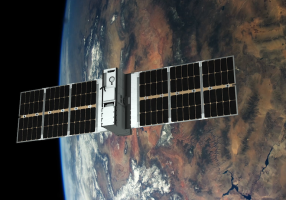Adelaide satellite startup Fleet Space Technologies has raised US$26.4m (A$36m) in a series B.
The round was led by existing backers Artesian Venture Partners, Blackbird Ventures, Mike Cannon-Brookes’ Grok Ventures, and Horizons Ventures – the private investment arm of Hong Kong billionaire Li Ka-shing – with new investors including Alumni Ventures, Hostplus, the South Australian Venture Capital Fund (SAVC) and In-Q-Tel.
The raise values the business at A$172 million.
The funding will underpin significant expansion in Fleet’s manufacturing footprint and workforce.
Fleet raised A$10.8 million two years ago to fund internet of things (IoT) connectivity to remote industries using nanosatellites, following from 2017’s AU$5 million Series A.
Co-founders Flavia Tata Nardini and Matt Pearson set out to raise A$25 million and will use the funds to create 70 new jobs.
Tata Nardini, Fleet’s CEO said the company’s focus is to create the world’s most advanced low-power satellite network, securing planet-wide coverage for millions of IoT devices by using its in-house nanosatellite technology.
“This investment secures the long-term sustainable growth of Fleet Space and is a global endorsement of the power of Australia’s rapidly growing Space technology sector,” she said.
“Our nanosatellite technology is proven and this capital injection is testament to confidence in our commercial model.
“We are ready to scale and realise the full potential of IoT technology to secure planet-wide coverage of millions of industrial devices. This will save billions of dollars for organisations in lost value while preserving precious resources and reducing carbon emissions.”
140 satellite constellation
The South Australian startup has created the most advanced “smallsat” payload yet delivered to orbit.
The shoebox-sized devices – the latest version is the Centauri 4 – generate 1o times more throughput per kilo than larger spacecraft and will support radical new efficiencies for hundreds of industries using IoT.
Fleet’s current network is made up of six nanosatellites, launched to orbit via SpaceX, an Indian Space Research Organisation (ISRO) rocket and twoRocket Lab launches. Its goal is a constellation of 140 small satellites in Low Earth Orbit.

A Fleet Space Centauri 4 nanosatellite
The $36 million investment will increase the size of that constellation to meet demand from more than three million compatible devices registered to join the Fleet Space network.
It’s predicted that there will be more than 14 billion connected, low-power devices by 2025.
The company is also leading the Seven Sisters’ Australian space industry consortium in support of NASA’s Artemis program to land the first woman and next man on the Moon by 2024 and create a sustainable human presence for later crewed Martian exploration.
Commencing in 2023, the Seven Sisters missions are designed to find accessible water and other resources on the moon.
Fleet investor Jonathan Meltzer, a partner at US VC Alumni Ventures said Fleet has delivered on its promise to unlock the potential of the Internet of Things through its nanosatellite technology.
“We are proud to be part of an ambitious new growth phase that will widen Fleet’s satellite network and more broadly serve critical infrastructure in remote locations,” he said.

The Fleet Space team
Credit: Source link


Comments are closed.